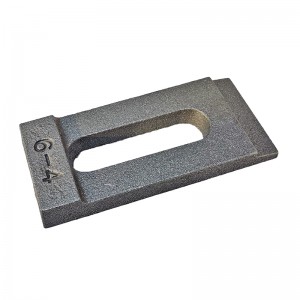- Afrikaans
- Albanian
- Amharic
- Arabic
- Armenian
- Azerbaijani
- Basque
- Belarusian
- Bengali
- Bosnian
- Bulgarian
- Catalan
- Cebuano
- China
- China (Taiwan)
- Corsican
- Croatian
- Czech
- Danish
- Dutch
- English
- Esperanto
- Estonian
- Finnish
- French
- Frisian
- Galician
- Georgian
- German
- Greek
- Gujarati
- Haitian Creole
- hausa
- hawaiian
- Hebrew
- Hindi
- Miao
- Hungarian
- Icelandic
- igbo
- Indonesian
- irish
- Italian
- Japanese
- Javanese
- Kannada
- kazakh
- Khmer
- Rwandese
- Korean
- Kurdish
- Kyrgyz
- Lao
- Latin
- Latvian
- Lithuanian
- Luxembourgish
- Macedonian
- Malgashi
- Malay
- Malayalam
- Maltese
- Maori
- Marathi
- Mongolian
- Myanmar
- Nepali
- Norwegian
- Norwegian
- Occitan
- Pashto
- Persian
- Polish
- Portuguese
- Punjabi
- Romanian
- Russian
- Samoan
- Scottish Gaelic
- Serbian
- Sesotho
- Shona
- Sindhi
- Sinhala
- Slovak
- Slovenian
- Somali
- Spanish
- Sundanese
- Swahili
- Swedish
- Tagalog
- Tajik
- Tamil
- Tatar
- Telugu
- Thai
- Turkish
- Turkmen
- Ukrainian
- Urdu
- Uighur
- Uzbek
- Vietnamese
- Welsh
- Bantu
- Yiddish
- Yoruba
- Zulu
ພ.ຈ. . 08, 2024 14:15 Back to list
Heat Exchangers in Nuclear Power Plants and Their Critical Role in Energy Efficiency
The Role of Heat Exchangers in Nuclear Power Plants
Nuclear power plants are essential components of the modern energy landscape, providing substantial amounts of electricity with a relatively low carbon footprint. One of the critical components that enable the efficient operation of these plants is the heat exchanger. These devices play a crucial role in transferring heat from one medium to another, ensuring the effective conversion of nuclear energy into electrical energy.
At its core, a nuclear power plant generates heat through the process of nuclear fission. In this process, the nucleus of an atom—typically uranium-235 or plutonium-239—is split into smaller parts, releasing a significant amount of energy. This heat is then used to convert water into steam, which drives turbines connected to generators that produce electricity. However, to maintain efficiency and safety, the plant must effectively manage the heat produced and ensure it does not lead to overheating of the reactor core.
The Role of Heat Exchangers in Nuclear Power Plants
There are several types of heat exchangers used in nuclear power plants, among which the shell-and-tube heat exchanger is the most prevalent. This design consists of a series of tubes, one set carrying the hot coolant and the other carrying the water that needs to be turned into steam. The two fluids flow in parallel yet remain physically separated, allowing heat to pass through the walls of the tubes without direct contact. This design helps maintain containment and safety—vital aspects in a nuclear facility.
nuclear power plant heat exchanger

Moreover, the efficiency of heat exchangers is critical in enhancing the overall performance of nuclear power plants. By maximizing the heat transfer between the two fluids, these devices reduce fuel consumption and minimize waste. An efficient heat exchanger can lead to higher thermal efficiency, meaning that more electricity is produced from the same amount of nuclear fuel, thereby also reducing operational costs.
Safety is another pivotal factor for heat exchangers in nuclear power plants. Any malfunction could lead to overheating of the reactor core or interruption in the steam generation process, which poses significant risks. Therefore, these heat exchangers are engineered to withstand extreme conditions and are equipped with redundant safety systems to ensure they can function correctly under all circumstances. Regular maintenance, inspection, and upgrades of these systems are crucial to ensure their reliability.
In recent years, advancements in technology have led to the development of more efficient and compact heat exchangers, including those using advanced materials that can operate under higher temperatures and pressures. These innovations not only enhance the efficiency of nuclear power generation but also contribute to extending the operational life of plants.
In conclusion, heat exchangers are integral to the operation of nuclear power plants, enabling the safe and efficient conversion of nuclear energy into electricity. Their role in heat transfer, efficiency enhancement, and safety management underscores their importance in the nuclear energy sector, as we continue to seek sustainable and low-carbon sources of energy for the future.
-
Durable Cast Iron Water Main Pipe | AI-Optimized Design
NewsAug.05,2025
-
8mm Thin-Walled Cast Steel Manhole Cover Pallet Bottom Ring | Durable
NewsAug.04,2025
-
Premium Cast Iron Water Main Pipe: Durable, Corrosion-Resistant
NewsAug.03,2025
-
Durable Cast Iron Water Mains | AI-Optimized Systems
NewsAug.02,2025
-
High-Efficiency Propane Boiler for Baseboard Heat | Save Energy
NewsAug.01,2025
-
Premium Source Suppliers for Various Gray Iron Castings
NewsJul.31,2025


